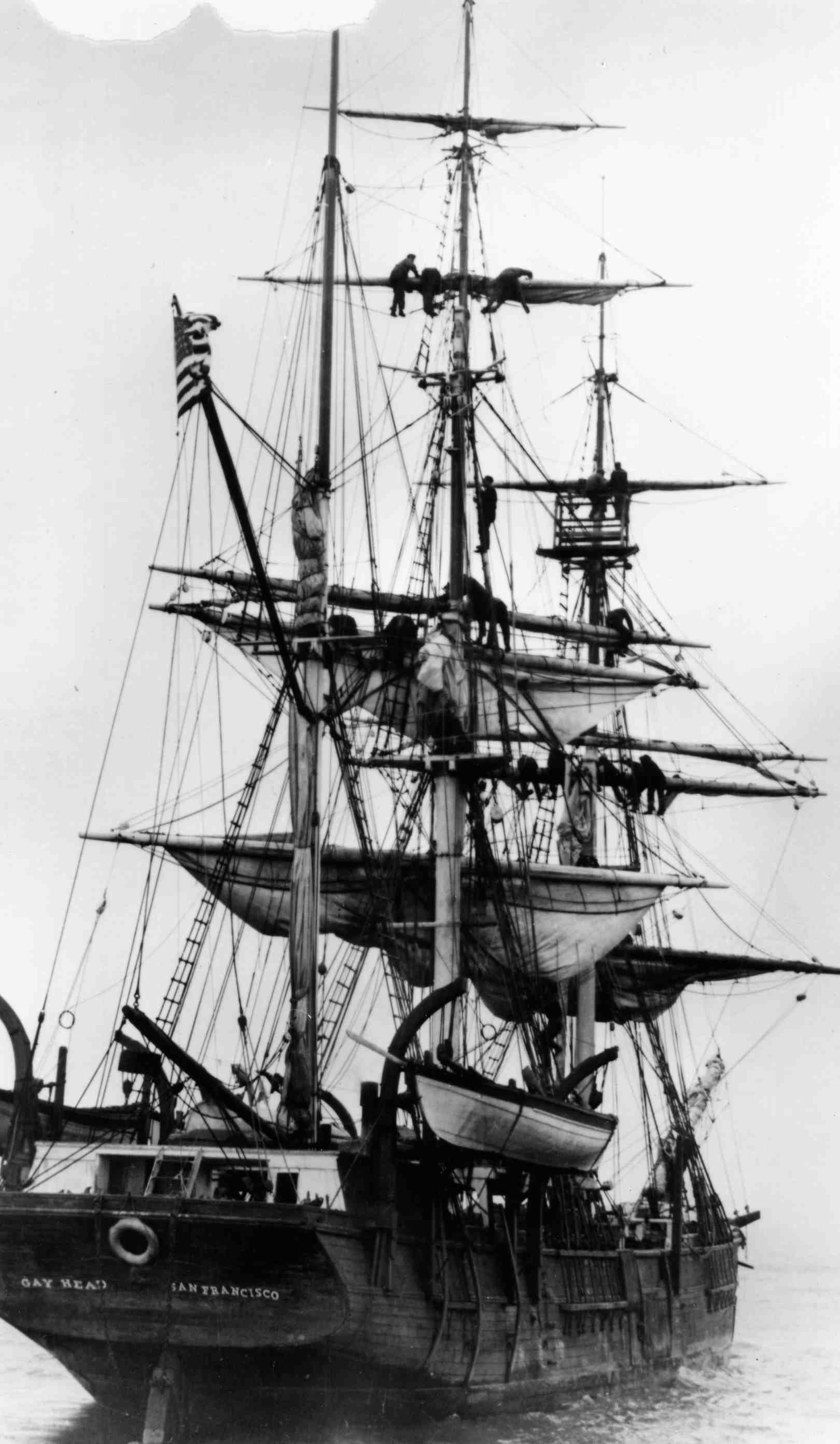The True Story of Mutiny on the Bounty
 Wednesday, March 30, 2011 at 02:24PM
Wednesday, March 30, 2011 at 02:24PM
By Larry Clinton
[I hope you’ll join us Thursday evening, April 7 for a showing of the classic 1935 movie Mutiny on the Bounty starring Charles Laughton and Clark Gable. To set the stage for the film, here’s some historic perspective, relating the time frame of the story to Sausalito’s own maritime history.]
The true incident which inspired the movie Mutiny on the Bounty occurred aboard the British Royal Navy ship HMS Bounty on April 28, 1789 – years after the Spanish first discovered San Francisco Bay.
The first European to enter the bay is believed to have been the Spanish explorer Juan de Ayala, who passed through the Golden Gate on August 5, 1775 in his ship the San Carlos, and moored off Angel Island in what is now known as Ayala Cove. Early Spanish explorers called the settlement to the South Yerba Buena, and the jot of land to the north Saucito (little willow), from the small willow trees growing along the stream banks of this area. That name evolved into “Saucelito,” and ultimately “Sausalito,” as reported in the Historical Society’s Sausalito book.
In 1776, Colonel Juan Bautista de Anza founded the first European settlement in the Bay Area by establishing a military garrison, or Presidio, in Yerba Buena. That same year the Franciscan Order built Mission Dolores.
Meanwhile, British merchant ships like the HMS Bounty were trading all over the world.
Under the command of Captain William Bligh, the Bounty and her crew were collecting and preparing breadfruit plants in Tahiti, which they planned to transport to the West Indies (today’s Caribbean) in hopes of transplanting them there to become a cheap source of food for slaves.
According to the website moviefone.com, the sailors were attracted to the idyllic life on Tahiti and repelled by the alleged cruelty of their captain. Master's Mate and Acting Lieutenant Fletcher Christian married a Tahitian woman, and others followed suit. Eventually Fletcher Christian and other mutineers set Captain Bligh and most of those loyal to him afloat in a small boat that began an epic journey to Timor in the Dutch East Indies (modern Indonesia). The mutineers then settled, some in Tahiti in 1789, others on Pitcairn Island, with Tahitians they had befriended.
To find out how this story ends, you’ll need to come see the film on April 7.
Meanwhile, Sausalito had become a seafaring center on its own. After establishing the first independent homestead in Yerba Buena, Captain William Richardson became Port Captain, and began directing visiting ships to Saucito for fresh water. In 1838, Richardson married the daughter of the Commandante of El Presidio and was given a land grant across the Bay which became Rancho del Sausalito. During its heyday, whaling ships bound for the Pacific were attracted to the protected deep-water anchorage off Old Town, which became known as Whaler’s Cove.
However, by the mid-1800s, the shipping industry had moved to San Francisco, Sacramento, and other areas, according to Jack Tracy’s book Moments in Time. Sausalito began settling into its dual role as a fishing village and bedroom community until the advent of ferries and trains turned it into a transit hub near the end of the 19th Century. That era lasted until the completion of the Golden Gate Bridge in 1937 made the trains (and, temporarily, the ferries) obsolete.
[The April 7 showing of Mutiny on the Bounty is a fundraiser for the Sausalito Historical Society and the Spaulding Wooden Boat Center. Donations will be accepted at the door. Doors open at 6:00 at Spaulding Wooden Boat Center, foot of Gate 5 Road, for a no-host barbeque & beverages & popcorn, plus self-guided tours of the facility. The film will be shown at dusk outdoors, so bring a blanket.]

On the whaler Gay Head, we see men laid out on the main topgallant yard of a typical mid-19th-century whaler rigged as a bark.
Photo courtesy of San Francisco Maritime Museum.

Reader Comments (1)
Often success is depended on whether you can get up the courage to fight fear.
The horizon of life is broadened chiefly by the enlargement of the heart.
-Takeshy Kurosawa straight jeans